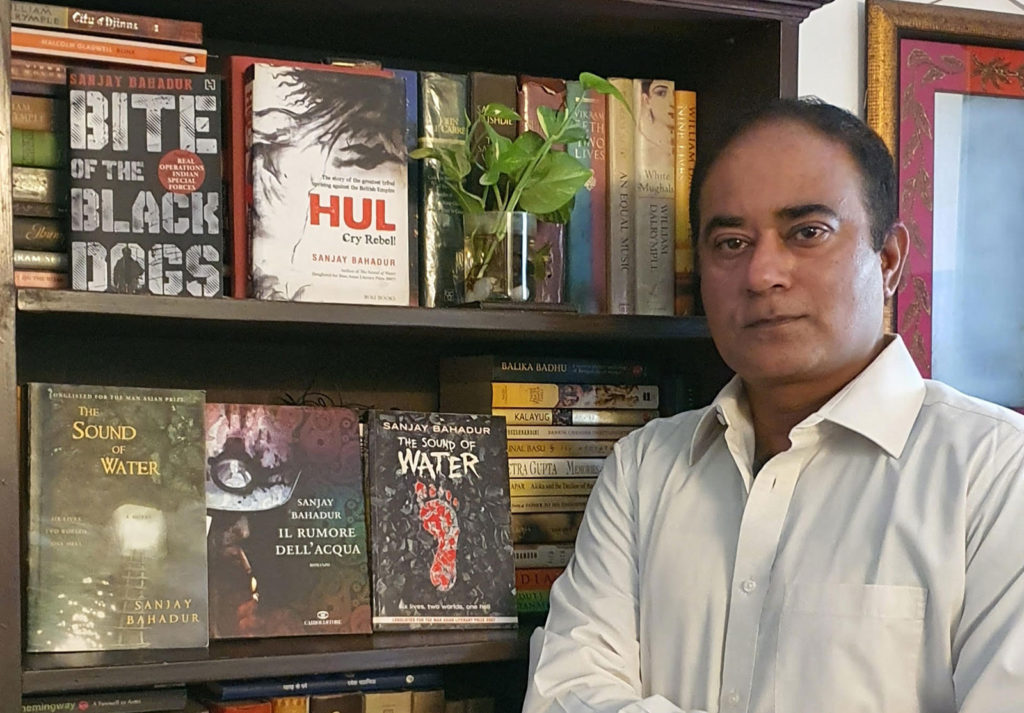
"Pain is inevitable. Suffering is optional,” says Haruki Murakami in his book What I Talk About When I Talk About Running. Murakami tells us about the thoughts that run through his head when he’s on a long haul - the agony and brutality of the long-distance experience, its connection with life and the fleeting nature of existence, the sheer loneliness of the act and the almost spiritual experience when it's nearing the end. "The thoughts that occur to me while I’m running are like clouds in the sky. Clouds of all different sizes. They come and they go, while the sky remains the same sky always.”
Ask Sanjay Bahadur if any of this sounds familiar and he will nod vigorously. A bureaucrat and writer, Sanjay decided one day that he would get on a cycle and ride 1000 km along the Brahmaputra river over ten days – not on a whim but for a very specific purpose. He wanted to promote fitness and call attention to new ways of discovering this incredible country, in particular, the Northeast. He hoped people wouldn’t just sit up and notice this ‘boring Babu” in his 50s doing something so challenging and out of character, but that they too would be inspired to shed their inhibitions and fears and go out there and experience Northeast India’s diversity. But for Sanjay, exploring the country was not new, though how he did it this time certainly was.
Born in UP and grew up in UP, MP, Gujarat and Maharashtra wherever his bureaucrat father was posted. In fact, the love for travelling began early on for him and his sister who joined the Indian Foreign Service and is the new High Commissioner of India to Malta. The good part of that constant relocation was we could feel at home in any part of the country. Even if he now considers himself a nomad, someone not rooted in a particular place or culture but a person with a pan-India identity. The bad part was perhaps, as he said "we never felt we belonged to any one place. There is a term for that feeling in Assam: “Jajabor” or “wanderer”. "That is a feeling I am quite comfortable with."
It was this love of travel and exploration as well as the desire to showcase the splendour of Northeast India, that made him embark on the solo cycle ride titled 1000 Baar Dekho – Northeast Dekho through Assam from March 7 to March 17, this year. That and this almost crazy desire to push himself physically and mentally to prove that age, in his case, 54, was just a number.
And so, he trained hard, spending ‘long and lonely’ hours on the cycle. But then Sanjay is a man of steely determination and discipline - which is why despite being Assam’s Principal Commissioner of Income Tax, he has published three books and is working his way through his fourth. He understands, acutely, the importance of time, the quiet that comes with writing - or for that matter lone cycling, and, what it can do to the mind and he knows how to pull himself out of the void that is inevitable when you’re on a long, lonely and gruelling path.
In this frank and open discussion with The NorthEast Stories, Sanjay speaks of the incredible pain and fatigue and why Northeast, “is a must-visit destination”.
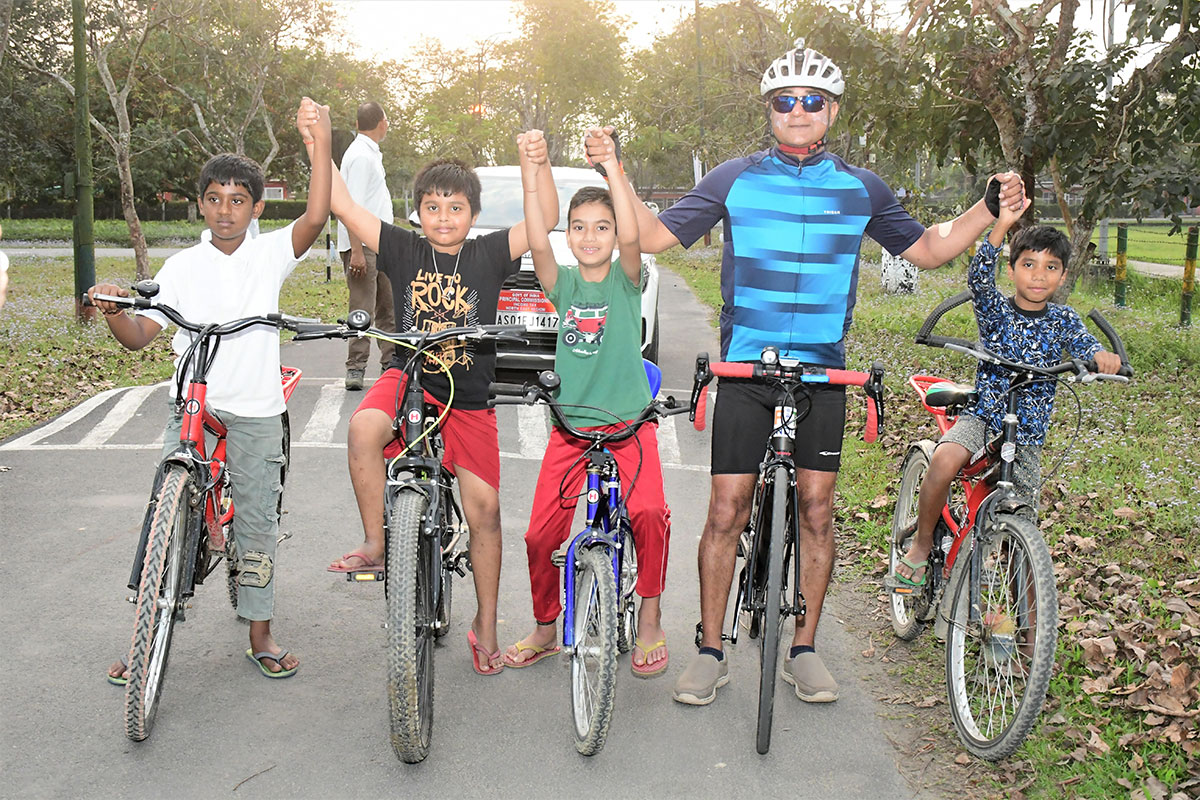
1000 Baar Dekho - North East Dekho" - what do you want people to think when they see this slogan?
As is obvious, the slogan was based on a popular old Hindi film song that is happy and fun. The ride logo and the slogan was created by my daughter, Tvesha who is a millennial and an advertising creative in Mumbai. Happiness, fun and good times are a way of life in the Northeast. This is the subliminal message the slogan wanted to convey to all those who are looking for a holiday destination.
Covering a 1000 km distance is a major feat in itself. What inspired you and how did you stay focused?
The initial idea was inspired by thoughts the Hon’ble Prime Minister of India, Shri Narendra Modi expressed in 2019 when he urged citizens to visit 15 places in the next three years. In the same year, he urged Indians to pay attention to fitness. These two thoughts led me to think about doing something that mixed tourism with fitness. This is how Incredible India and Fit India campaigns decided to sponsor and organise my "1000 Baar Dekho - North East Dekho" ride along the Brahmaputra.
In the cycling world, riding 100 km or miles in a day is called "doing a century". As with cricket, this is a big deal. In my 1000 km ride, I did nine centuries almost back-to-back. I am 54 and wanted to test for myself the saying: “Age is just a number” before endorsing this concept to others. Now, I can. I have been impressed by so many things 50 plus people can do in different parts of the world. In India, people are generally less adventurous at this age. I wanted to change this outlook for my friends and relatives who are above 50 and hopefully for some others as well. I am happy to say that now at least a dozen or more of my friends above 50 have decided to take up some physically challenging activities – many of them want to cycle.
The training for covering 1000 km on 10 riding days is hard and lonely. You have to cut away from normal things to an extent. Everything – from your diet, sleep pattern, fitness regime and consistent and long, lonely hours on a cycle are a battle for most of us who are leading a regular working life with family. Focus, determination and unwavering grit when you feeling like giving up are the key to training and executing such a feat. It is all about pushing the body and the mind.
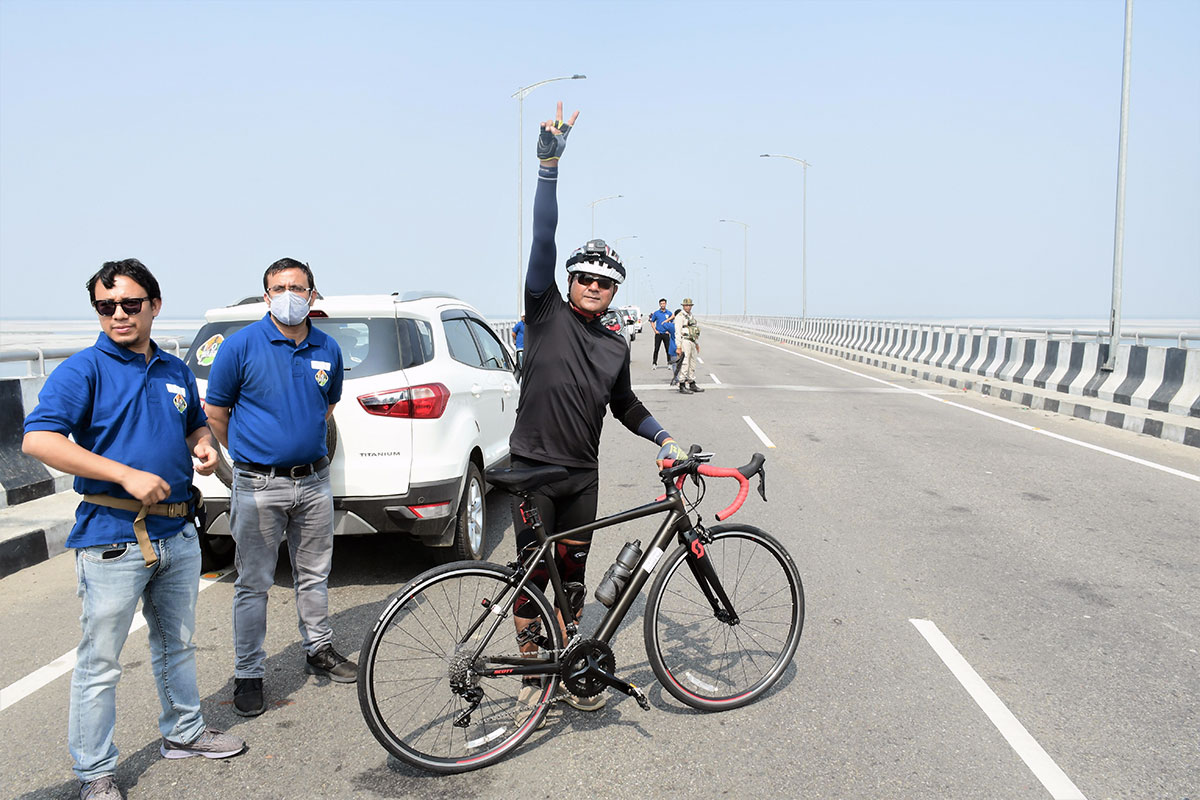
Do you see yourself more of a fitness icon or an ambassador for Northeast Tourism? What does this initiative mean to you and who do you seek to inspire from this?
I primarily see myself as an ambassador for promoting Northeast tourism. I love the region. If I were a good singer, I would have made a song and put it up on social media. If a dancer – I would have danced for attention. I am neither. I can cycle. So, I thought of doing a ride that is arduous enough to draw the attention of a few people at least. And through that attention, I wanted to focus on the Northeast. Any event that gets talked about draws attention. A 54-year-old boring “babu” in a government job is not expected to do such things. I hoped if doing something like this draws the attention of even a thousand people and results in drawing an additional 1000 tourists to the Northeast, my effort would be worth it. By the huge numbers of reactions and responses that have come to me and my friends on social media, I think at least a few hundred tourists are now planning to visit the Northeast only because they got to know about “1000 Baar Dekho - North East Dekho". I also hope to encourage my colleagues in government to pick up various initiatives of the government – any initiative that inspires them to do something personal to promote that initiative. Public service means you should carry that spirit even in your personal life and inspire through personal actions.
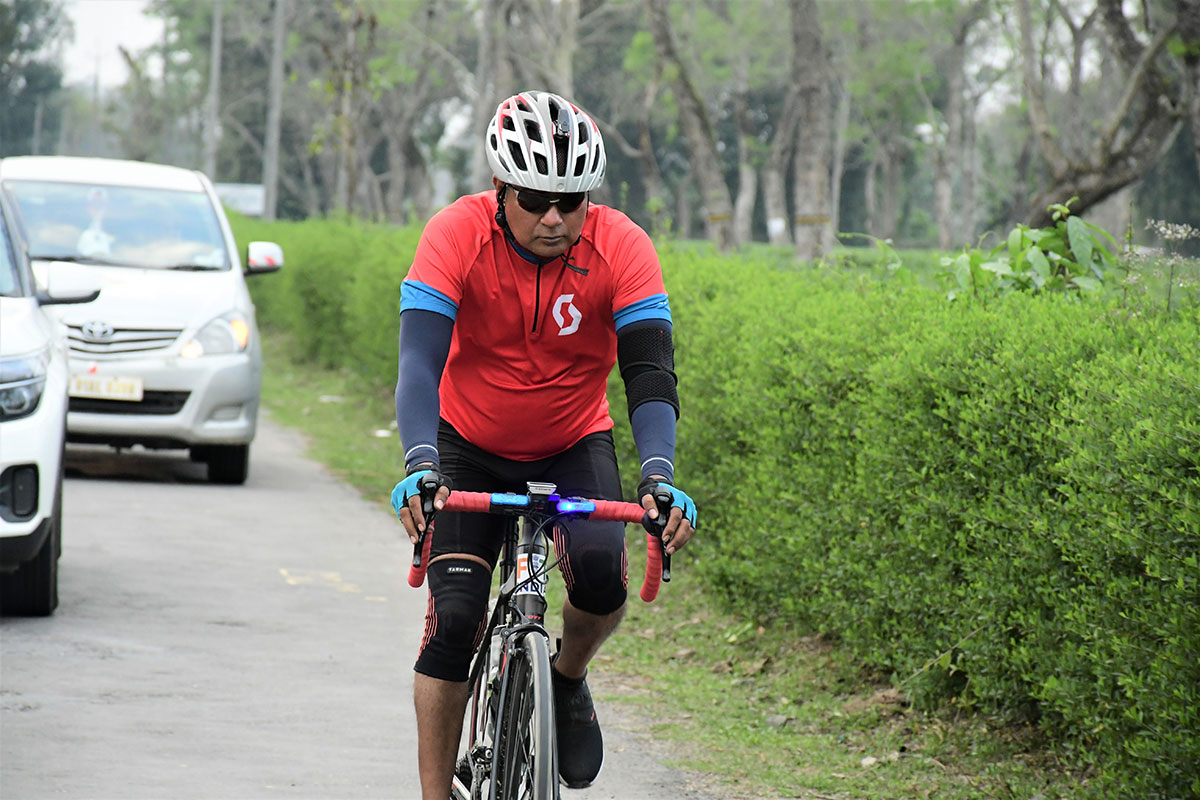
What are some spots in Assam that took your breath away?
I love the Northeast. So, every part of the region, its people, its culture and cuisine excite me. However, the breath-taking pastoral beauty of paddy fields in Nellie – Nagaon stretch, the lush greenery of Kaziranga area, the winding roads through tea gardens in Duliajan – Dibrugarh area, the majestic vista of the Brahmaputra from Bogibeel Bridge, the tree-canopied routes along Dhemaji, the mystical banks of Brahmaputra around Biswanath Chariali - these are all sights, sounds and smells that I shall cherish forever and would urge people to come and experience for themselves. Riding along Brahmaputra was like exploring the soul of the Northeast. I could visualise my path connecting to each of the eight states that form the region. Northeast is a must-visit destination.
Did you have any personal setbacks during the journey, or any fond memories? Have you travelled such a great distance across Assam previously?
It was a unique personal experience for me. It was the first time I was doing an ultra-distance endurance cycling effort and that too solo. Generally, anything over 800 km is considered “ultra-distance” in cycling. It was a supported event where there was a support team with me to meet exigencies such as injuries, breakdown etc. Since I had set a rigid timeline of 1000 km in 10 riding days, this was necessary. Assam is not very urbanised or densely populated and there are stretches where for miles there are no eateries or medical support. Also, I was riding a relatively complex bike – a Scott Speedster 10 with Shimano 105 group-set for which finding spares or mechanics would be an impossibility. Therefore, a considerable amount of planning went into the ride. With 100 km to cover over each day, everything had to work with clockwork precision. I am grateful to the Government of India for lending all the support for my initiative through Incredible India and Fit India and very thankful to Ms Rupinder Brar, ADG Tourism and Mr Sandip Pradhan, DG SAI for their active involvement in the event.
Some of the biggest challenges were nutrition, fatigue and psychological lows. I was spending over 3500 calories during the ride and the intake of nutrition, electrolyte and hydration had to be done very scientifically. Being an endurance event, excessive muscle fatigue had to be fought constantly. Ultra or endurance cycling is most commonly done in groups. The combined energy of fellow cyclists is a fantastic boost. However, I was a solo cyclist. The support team followed in vehicles but I was doing the ride alone with no conversation, no music on earphones, no mutual words of encouragement or cheer. At times, your mind gets depressed and your body feels like giving up. Sometimes, I caught myself having sudden negative thoughts of just throwing myself under a passing truck or bus. I was not doing a pleasure ride but an endurance event. I had to self-motivate and acquire inner balance all the time. I had a tendon tear in my left forearm, strained my QL and for two days dealt with hamstring stress. In March, the temperatures would sometimes touch 30 degrees Celsius during the ride that lasted 6-7 hours. The chafing of the inner thighs was painful. The fingers become numb from hours of manoeuvring gears and breaks, eyes burned from looking out for traffic, dust or heat. At times, I had to keep riding through rain and many times after dark as the sun sets early in the Northeast. Through the 1000 km ride, my wife, Shampa was a pillar of support and strength
But there were great moments of positivity and sheer thrill each day. The day I rode through Kaziranga forests, we spotted some rhinos and elephants. I and my support team stopped to click photos. What a fantastic sight it was! Riding to the majestic Ahom monuments in Shivsagar or crossing the Brahmaputra at Bogibeel – all were special moments. On Bogibeel bridge, one of the support team members sang “Namami Brahmaputra” on a megaphone for all of us. The day also marked my halfway point of 500 km. Each day, the team gathered twice to celebrate my day’s century and again when I added 100 km to the ride. In the evenings, we would participate in some cultural event organised by India Tourism and dissect the highs and lows of the day’s century. The morning starts became a ritual with music blasting while the physios warmed me up with spectators and team members cheering and clapping all around. It was an exhilarating feeling that sustained me through the gruelling 100 plus kilometres, the heat, dust, rain and depression that would inevitably follow.
Being posted in the Northeast for over three years, I have travelled extensively in Assam and the seven sister states. But have never done 1000 km at 20 kmph or less, for hours and days like I did on this ride. In a car or train miles just fly past. Your appreciation of the terrain is a hundred times more when you travel slowly on a cycle. I did reach riding speeds of 40 kmph and even crossed 50 kmph a few times but my average speed overall was between 17 – 20 kmph. That gives ample time to soak in the environment, observe passing hamlets and villages, and interact with people everywhere. It was a life-changing experience for me.
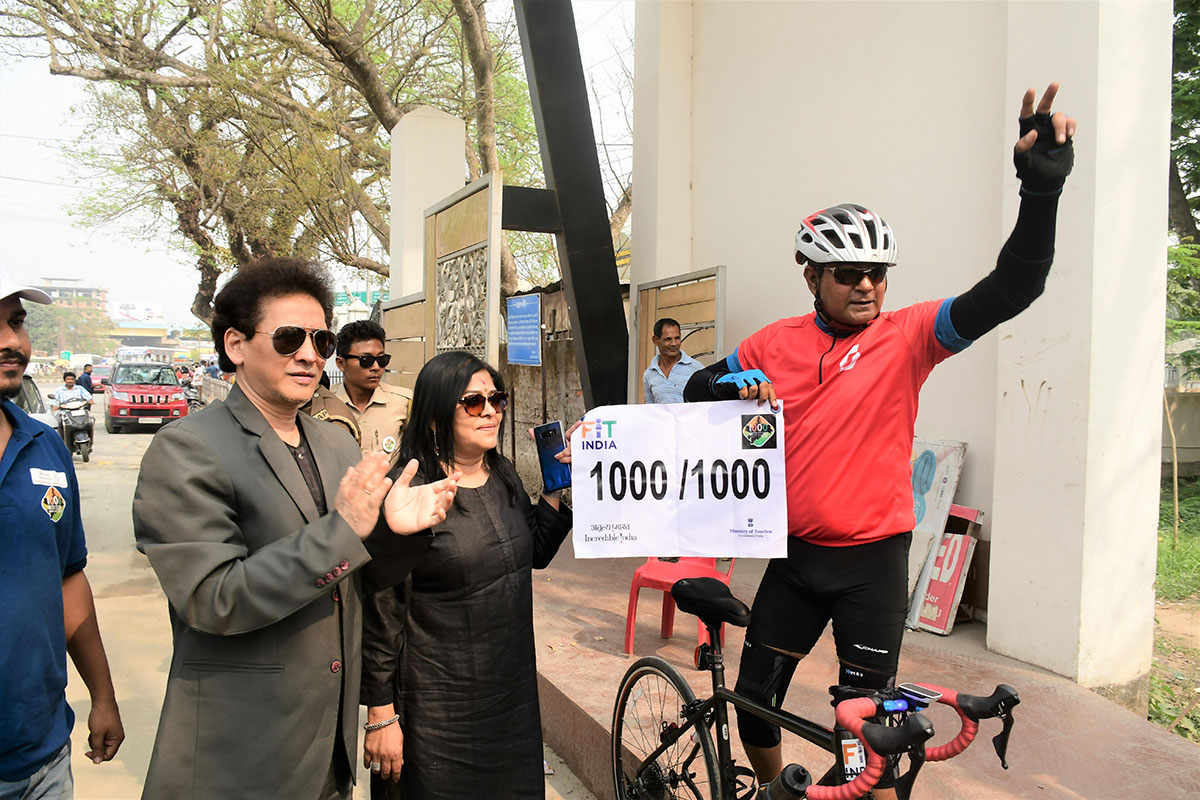
How do you juggle your time between official engagements and working on your fourth book?
It is not easy. With a full time and demanding job as a civil servant, one bears many responsibilities. However, one must keep a small part of one’s life for self-development and self-actualisation. If this is not done, I believe, life becomes dull and joyless. At least, such persons become dull and uninteresting. So, I take care to squeeze in a bit of “me time” – even if it is just listening to music or reading a book for half an hour. As far as writing is concerned, it is something I enjoy, like cooking. It is therapeutic. When I am in the middle of writing a book, I have phases when I forgo sleep and write for long hours at night or on weekends. Then there are phases when no writing comes. I have never felt that any job can be so demanding as not to permit any time for creative or intellectual expression. We have had several Presidents and Prime Ministers of India who have written books. Looking at them, what excuse can I have?
There is certainly more to your passion for bringing the Northeast to the forefront - since you wrote on the Santhals, Kashmir, Indian mining - all important issues from a national, environmental and minority rights point of view. So there must be something deeper that draws you towards this initiative. What might they be?
For me, India is like a mother. I love her and its people. Whatever I do – in professional life or personal life, has that feeling somewhere inside me. I believe anything that is done with that feeling of love – whether writing or riding will bring some positive outcome for my country and is a positive contribution in some manner. I guess that was the basis of conceiving and executing “1000 Baar Dekho - North East Dekho".
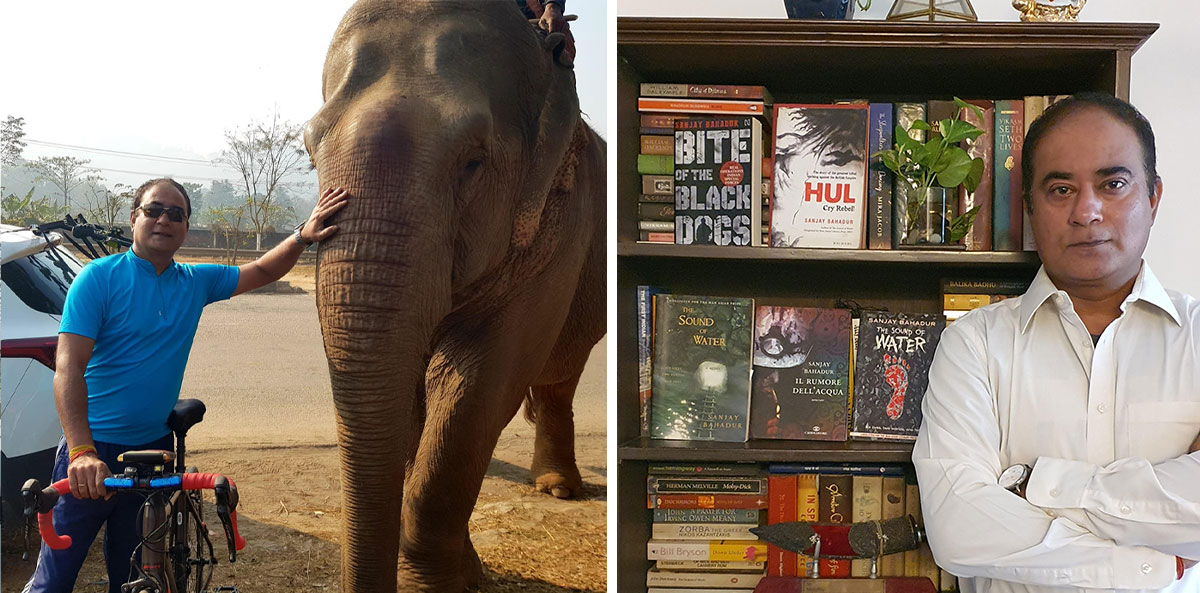
You use artistic mediums like books to push the political and humanitarian discourse - what might be the creative process behind putting cycling and Northeast tourism together?
Endurance cycling is a hard sport. Tourism is a soft experience. You have to be creative to be able to link wrestling with cooking or endurance cycling with tourism. For me, when I was thinking of planning a personal cycling event, tourism was not part of my thought. Initially, about six months back, it was just planning for a century and then a double century rides over successive weekends as purely a personal feat. Then, it struck me, why not do a 500 km ride? The slogan “500 After 50” came to me. As I started training, I soon realised that I would be able to do 500 km with relative ease. It wasn’t going to truly challenge me. So, I started toying with the possibility of doubling that number. I decided to attempt 1000 km. But somehow, even that was not posing a mental challenge. I could easily take a few weeks off and do that distance. So, I added the additional challenge of doing 1000 km in 10 days. As I talked to my wife, children and close friends, they were a little wary but encouraging. Most of them felt that if I was going to undertake such a challenge, I should think of linking some cause that was close to my heart. That is when the creative juices started flowing in me. After a lot of thinking, I felt that cycling as a mode of seeing places is well known in Europe. It is also an Olympic sport. So, I linked promoting tourism in the Northeast to an endurance cycling event.

